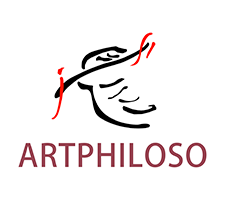In recent years, the works of Chinese emerging artists have attracted increasing attention from collectors worldwide. As the global art market expands, these younger Chinese artists have found themselves at the center of a growing art movement. This article examines five key reasons why international collectors are gravitating toward Chinese emerging artists, drawing insights from existing discussions while introducing new perspectives and adding depth to the conversation.
The Chinese art market has seen explosive growth in recent years, with rising demand for works by both established and emerging artists. While well-known Chinese artists like Zhang Xiaogang and Ai Weiwei dominate the higher echelons of the market, emerging artists have also caught the eye of collectors, thanks to their unique blend of traditional Chinese elements and contemporary styles. Art Basel Hong Kong, for example, has become a major event where international collectors can find and purchase works by new Chinese talents, often at more accessible prices.
This growth has been supported by increasing interest in China’s broader cultural influence, with young artists tackling both local and global themes, making their work relevant across different cultural contexts.
The rise of the Chinese art market is drawing international attention to emerging artists who blend tradition with innovation.
As China’s cultural influence continues to grow, its artists are increasingly seen as vehicles for exploring Chinese identity in a modern world. Unlike earlier generations, who often focused on political or historical themes, today’s emerging artists delve into more personal subjects, such as identity, transformation, and memory. These themes resonate with collectors looking for works that express cultural depth in a contemporary context.
Chinese culture’s rising global profile makes these works highly appealing to collectors who seek art that tells a uniquely Chinese story while engaging with universal themes. Many young Chinese artists also incorporate traditional techniques into their work, such as ink painting or calligraphy, offering an innovative take on classic art forms. For instance, Tao Art frequently showcases these kinds of works, offering a platform for artists who are redefining Chinese artistic traditions.
Chinese emerging artists offer a fresh, modern perspective on traditional culture, attracting global collectors.
One of the primary factors driving the popularity of Chinese emerging artists is their affordability compared to established Western artists. The cost of a piece from a new Chinese artist is often significantly lower than that of works by famous artists like Banksy or Gerhard Richter, yet these emerging pieces are seen as offering similar, if not better, potential for long-term appreciation.
As Chinese emerging artists gain recognition, the value of their works is expected to rise, making them an attractive investment for collectors. Auction houses like Sotheby’s and Christie’s have seen an increasing number of Chinese artists featured, with many selling for significantly higher prices than they did a few years ago.
The affordability of Chinese emerging art, combined with its potential for appreciation, makes it an enticing investment.
Digital platforms have revolutionized the art world, providing artists with the ability to reach a global audience without traditional gallery representation. Online marketplaces such as Saatchi Art and Artspace, along with Chinese platforms like Tao Art, have made it easier for emerging Chinese artists to showcase their work to collectors worldwide.
Social media platforms like Instagram and WeChat also allow artists to interact directly with potential buyers, bypassing the traditional gallery system. This direct communication allows collectors to understand the artist’s process and philosophy, creating a more personal connection with the works they purchase.
Digital platforms have transformed the art market, allowing Chinese emerging artists to connect with international collectors more easily.
The Chinese government has supported the arts in a variety of ways, from grants to exhibitions, making it easier for emerging artists to gain exposure. Programs like the National Art Fund have helped young artists pursue their work while gaining recognition both locally and internationally. Cultural institutions and galleries, such as the UCCA Center for Contemporary Art in Beijing, provide platforms for these artists to exhibit their work to global audiences.
This institutional backing ensures that emerging Chinese artists have the resources they need to grow and succeed in the international market. Collectors are more likely to invest in works backed by institutional credibility, making the support of government and art institutions a crucial factor in their success.
Government and institutional support have played a key role in helping Chinese emerging artists gain visibility and credibility in the global market.
As the global art market continues to embrace the dynamic wave of Chinese emerging artists, the works showcased on Artphiloso.com offer an exceptional glimpse into the evolving landscape of contemporary Chinese art. At Artphiloso, you can explore a curated collection of original oil paintings that fuse traditional Chinese motifs with modern expressions, crafted by the talented artist Philo. Each piece reflects a deep connection to Chinese culture while engaging with universal themes of identity, transformation, and the human experience.
Whether you're an art enthusiast looking to diversify your collection or a seasoned collector seeking the next rising talent, Artphiloso presents an opportunity to invest in works that capture the essence of contemporary China. The pieces featured on the site embody the vibrant energy and creative spirit of a new generation of Chinese artists, making them both visually striking and culturally significant.
Visit Artphiloso.com to discover a world of art that bridges the past and the present, inviting you to experience the future of Chinese contemporary art through the eyes of Philo.
Hi, I’m Philo, a Chinese artist passionate about blending traditional Asian art with contemporary expressions. Through Artphiloso, my artist website, I share my journey and creations—from figurative painting and figure painting to floral oil painting and painting on landscape. You'll also find ideas for home decorating with paint and more.
